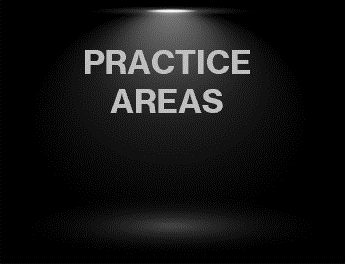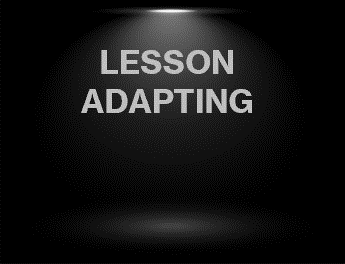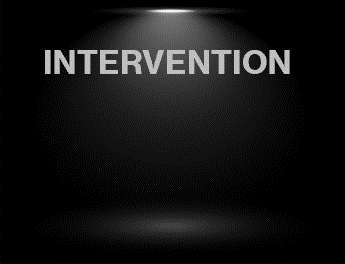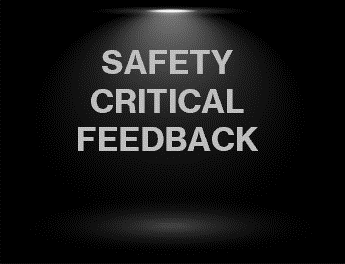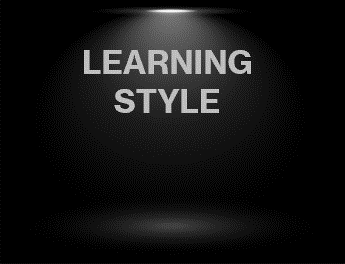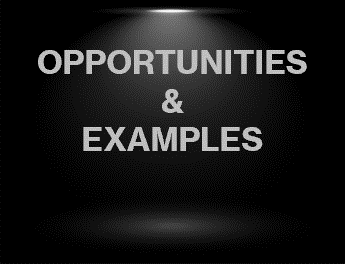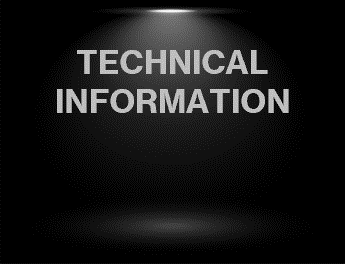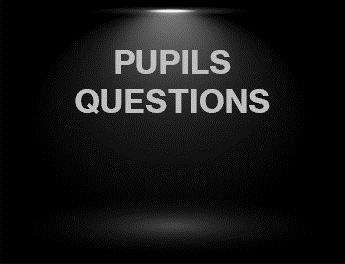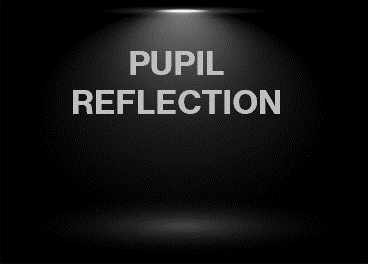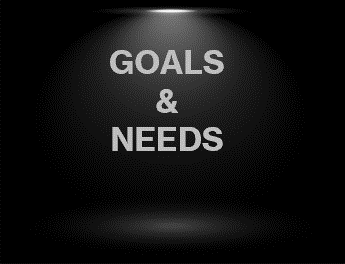
GOALS AND NEEDS
Did the trainer identify the pupil learning goals and needs?


SPECIFIC.
The learning objective that you are looking at should be clear and well defined.
You should be aiming to engage with your pupil to see whether the particular objective is within their capabilities at the present time.
Use this part of the SMART framework to dig in to as much content as is necessary to work out the specifics of what your pupil knows,
what they are trying to achieve, and how they are going to achieve it.
Just a simple task of coming to the stop at the end of a road can bring in so many questions.
What type of road?
Where will you need to stop?
Are you turning right?
Are you turning left?
Are you going straight ahead?
Is it a busy junction?
What is the speed limit of the road you are going to be joining?
Does it have a Give way line or Stop line?
What about if it is wet?
What about if it is night time?
How fast are you going to approach it?
Will you need to give a signal?
Is the junction Open or Closed?
These are just a fraction of possible questions that might come up in the conversation regarding the specifics of
your pupil wanting to come to a stop at the end of a road.
MEASURABLE.
By the use of a scale 1 to 10
1 being not very good, 10 being very competent.
Ask your pupil at what scale do they current think they are.
It is irrelevant what number they choose!
It is their current understanding of their ability and NOT YOURS!
By using scaling you have the ability to discuss how between the two of you, you can build on their current level.
ACHIEVABLE.
The learning objective should be realistic and capable of being achieved.
If you try and achieve more than your pupil is capable of it can be very demotivational and frustrating for them.
Building knowledge, experience and abilities can be achieved in bite sized chunks, but by trying to achieve it all in one hit could cause information overload
and have the opposite effect on the initial learning objective.
This is where a Planning Goal may need to be introduced as the learning objective may not be achieved in one session,
it may take numerous sessions to make the learning objective achievable.
RELEVANT.
The learning objective must reflect your pupils current ability.
As mentioned earlier in this section, you wouldn't be taking a new learner onto the motorway on their very first lesson as they would not be cable of achieving the goal, and it definitely would not be relevant to their current ability.
By pushing your pupil too quickly, they will become demotivated and disengaged from the learning objective.
TIMELY.
Defining a timeline!
It may be necessary to set the timeline to more than one or more session to achieve the learning objective.
By making the pupil aware that the particular learning objective may take time will take the pressure off of them to feel that it must be achieved instantly.
Time to become competent in each learning objective is crucial to creating safe drivers. If things are rushed or not carried out in a timely manner then the skills will be watered down.
On the other hand you must ensure that the learning objective is not played out in such a manner that it becomes unengaging for your pupil. If they understand the objective and can carry it out competently then you either need to introduce a new objective or increase the level of the current objective so that is begins to challenge your pupil. This may mean moving location to busier roads or faster moving roads etc.
By using SMART objective you will provide clear and concise goals. This will aid your pupils in the understanding of what is required of them, ensure they remain engaged during your sessions, and allow them to see where learning is taking place.
The scaling at the start and end will show this, and will allow you to constantly reassess where they are and find out what could be changed or done differently to make their scale a larger number.
When your learner scales their current ability it is very likely that they will tend to score higher than you believe them to be. By entering into a discussion with them without undermining them (SO DON'T SAY YOU THINK THEY ARE A 3 IF THEY THINK THEY ARE A 7), you can help them to understand that maybe there are things missing from their skill set that would maybe bring that score down.
let's say that your pupil was asking to start introducing roundabouts to their sessions.
You may ask them how much they understand about the rules of roundabouts.
They may have a good knowledge on the rules of who has priority and when and where to signal, and also about lane discipline while navigating them.
However, they may have been having a few previous session with you where the use of mirrors and signalling have been a little sketchy.
So you ask them "based on your understanding of roundabouts, where would you scale yourself from 1-10 on your ability to deal with them while moving?"
Their score may come back as an 8
so you could ask them "What would be required to make that 8 into a 9?"
they may say "Well once I've driven them I'll know I can do it so that would bring my score up"
This on the principle of it might be quite correct, but you are not going to know that until they actually enter the roundabout for the first time.
So, you trundle off to a relatively quiet roundabout and let them have a go.
You've asked them to take the 1st exit to the left once they get to the roundabout.
They arrive at the roundabout, no mirror checks, no signal, and they take the roundabout in 3rd gear causing them to go around it at speed.
Once this has been done you can pull them in and discuss how they felt it went.
They may say "It was great!"
This can then lead you to delve in deeper as to how good it actually was.
INSTRUCTOR
"Ok, so you felt that was great, was there any of it you thought wasn't so great?
PUPIL
"Hmmm I don't think so!
INSTRUCTOR
"Ok, so how were your your mirror checks and signal to notify other road users of your intentions
and what did your speed feel like coming around there?"
PUPIL
"Oh! I forgot to use them didn't I, and it did feel a little fast"
INSTRUCTOR
"Ok, so that's good that you realise that. So what could we do differently next time we try it?"
PUPIL
"Well, I suppose I need to know who is behind me because I definitely need to slow down next time and go into 2nd gear because 3rd was way too fast, and putting on a signal will let others now where I intend to go"
INSTRUCTOR
"That's a brilliant analysis of things to do that will make dealing with this type of roundabout safer, well done. Would you like to try that one again?"
PUPIL
"Yes, I'd like that"
INSTRUCTOR
"So just before we move off, and based on what happened at that first attempt, where do you feel your scaling score would be from that last attempt?"
PUPIL
"Hmmm actually, based on all the things that should have been done, maybe that attempt would have been a 5."
INSTRUCTOR
"Ok, well it's nice to see that you realise there is room for building your skill on this.
Let's see if we can bring that score up to a 7 on this next attempt"
So it only take a little discussion to allow your pupil to understand that things may need a bit more work
to increase their skill set without telling them their score is totally off mark.
By letting them realise through self reflection that the skill is maybe not as good as they think, it will encourage them to work
on building that skill to a higher level and keep them motivated in the process.
These are the skills 27 skills that the DVSA state a learner will be required to learn before the take their driving test.
ARE YOU CAPABLE OF TEACHING THESE?
AND ARE YOU COMPETENT IN KNOLWEDGE AND ABILITY TO CARRY THESE OUT WITH EASE?
Anything over and above these skills will obviously make your learners better drivers, but if you don't know all these yourself then you need to do your research and ensure your skills are the best they can be.
You would be failing yourself and your pupils if you can't.
1. Legal responsibilities
As a driver, it’s your responsibility to know how the law relates to both yourself and your vehicle. Make sure that you’re up-to-date with the rules and regulations.
You should understand how the following affects your driving:
Health
Eyesight
Drink
Drugs
Tiredness
Mobile phones
You must be able to check that the car you’re driving is:
Taxed and has an MOT (if it needs one)
Insured
Safe to drive (roadworthy)
2. Safety checks
It’s important that your car be in good working order before you start the engine. You should be aware of what to check, how to do it and how often to do it.
Think FLOWER to remember these checks:
Fuel – whether you have enough fuel for the journey and, if necessary, planning where to refuel the car
Lights – how to check all lights are clean and working
Oil – where and how to check the levels of engine oil and brake fluid
Water, screen-wash and coolant – where they are and how to check them
Electrics – how to check that the battery and charging system, indicators, horn and other warning devices are working properly
Rubber – the correct tyre pressure, how to measure it and how to check tread depth and tyre condition and the wiper blades are in good condition.
You should always check that the brakes and steering are working before you start to drive.
3. Cockpit checks
These checks may be simple, but they’re essential. The car you’re using needs to be comfortable and ready for you to drive before you start the engine.
You should always check:
All doors are closed and the parking brake is on
Your seat is in the right position, and you can reach the foot controls comfortably
Your head restraint is in the right place
The steering wheel is adjusted so you can use it easily
Your seatbelt is fastened and comfortable
All mirrors are correctly adjusted
Whether you’ll need to refuel the car
The parking brake is on and the gear lever is in neutral (or in P or N in an automatic car)
You should know:
The right order to carry out the cockpit checks – always adjust your seat before checking the mirrors
The different ways to adjust your seat to give you the best driving position
How to adjust the mirrors, including adjusting the interior mirror at night so you’re not dazzled by the vehicle behind you.
4. Security
This covers not only the security of your vehicle but also its contents and your personal security. You need to be aware of the ways that you can reduce the risks. This includes:
Staying alert at all times
Letting someone know where you’re going and when you expect to arrive or return
Keeping important or valuable items locked away from view while you’re in the car
Choosing a secure place to park and leave the car, especially at night
Fitting additional security measures, such as a steering wheel lock and immobiliser
5. Controls and instruments
You need to concentrate on what’s happening around you when you’re driving, so operating the vehicle’s controls should become second nature. This includes:
Foot controls – the accelerator, clutch and brake pedals
Hand controls – the parking brake, steering wheel, indicators, headlights and gearstick
Other controls – the horn (you need to know when and for what reason you can legally use it), windscreen wipers, demister and heated windows.
You should be aware of any controls specific to the car you’re driving.
You must also know the meaning and function of each element of the instrument panel.
6. Moving away and stopping
You have to move away and stop every time you drive, and that’s why it’s so important to make sure that you know how to move away and stop safely.
You should:
Be able to move away and stop safely on level ground, on a hill, at an angle and straight ahead
Use the mirrors – signal – manoeuvre (MSM) and position – speed – look (PSL) routines
Observe what’s happening around you and be aware of any blind spots
Co-ordinate your use of the accelerator, clutch and footbrake so that you move off and slow down safely and smoothly
Use the parking brake and steering competently
Know where and when to look, what to look for and how to act safely on what you see
Be able to identify suitable stopping places
Know where and when to signal
7. Safe positioning
Make sure that you drive in the correct position for the road on which you’re travelling. It’s important not only for your safety but also for the safety of other road users.
You should be able to:
Use the MSM and PSL routines
Show good lane discipline by planning ahead and moving into the correct lane in good time
Adapt your road position to suit the road width and traffic conditions
Keep a safe position during normal driving, especially around bends
Take up the correct position on a one-way street
You must also understand:
How other vehicles, such as lorries and cyclists, need to position themselves
What clearance you need to leave when passing stationary vehicles, cyclists or obstructions
8. Mirrors – vision and use
You must know what’s happening around you at all times and act safely on what you see.
You should know:
How to make use of the mirrors – signal – manoeuvre (MSM) and position – speed – look (PSL) routines
When to use the mirrors
Why you need to use the mirrors and the importance of regular mirror checks
How to act on what you see in the mirrors
You also need to know about the different mirrors fitted to the car, including:
The uses for the interior mirror and the 2 exterior mirrors
The effect that flat, concave and convex mirrors have, and how to interpret what you see in them
What areas each mirror covers and where the blind spots are
9. Signals
It’s important to understand, and respond safely to, signals given by other motorists. You should always give clear, well-timed signals to other road users so that they know what you’re planning to do.
You should know:
Why it’s necessary to give signals
When and how to give signals
When and how to give arm signals
When signals are not required
To understand signals given by other people using the road, you should know:
The significance of other types of signal, including brake, reversing and hazard warning lights
How to read signals given by traffic controllers such as school crossing patrols
10. Anticipation and planning
These are the core skills of all areas of driving. You should always be aware of what’s going on around you and plan what you need to do in response. Planning ahead can also make your driving more efficient. You can save fuel and wear on your brakes if you ease off the accelerator earlier.
You should be able to:
Use the MSM and PSL routines
Identify hazards from clues and respond to them in good time
Recognise times, places and weather conditions that mean there’s a higher risk
Use scanning techniques to plan ahead and prioritise how you’ll deal with hazards
You also need to be able to anticipate the actions of other road users.
You should be familiar with the risks associated with:
Cyclists
Motorcyclists
Drivers of large vehicles
Pedestrians, including the very young, older people and those with disabilities
Animals
Emergency vehicles
11. Use of speed
Base your speed on factors such as the road conditions, weather, traffic and pedestrians. Always drive within the speed limit.
You should:
Know the national speed limits and restrictions for different types of vehicle and any restricted speed limits for the road you’re on
Adjust your speed to take account of road, weather and traffic conditions
Choose an appropriate speed where there are pedestrians and in traffic-calmed areas
Know the stopping distance for your car in different conditions and how to calculate a safe separation distance from the vehicle in front
12. Other traffic
Most of the time when you’re driving, there will be other traffic on the road. You need to be able to deal safely and confidently when meeting, crossing and overtaking other vehicles.
You should be able to deal with:
Meeting oncoming traffic when there are parked cars or obstructions on your side of the road
Meeting oncoming traffic on narrow roads with passing places
Crossing the path of other traffic when turning right
Overtaking legally and safely
You need to know:
The MSM and PSL routines
Why and when to give way – you should not cause another road user to slow down or alter their course when they have priority
The significance of passing places, warning signs, road markings and how to deal with obstructions
The importance of planning and anticipation, and acting safely on what you see
How to drive on all road types, including a one-way or two-way road, a three-lane two-way road, a dual carriageway and a motorway
13. Fuel-efficient driving
Everything from the type of car and the fuel it uses to the way in which you drive influences the environment. You should understand how to reduce any negative effects to keep the air we breathe cleaner.
You need to understand how driving affects the environment and be aware of:
The effect that vehicle exhaust gases have on the climate and health
How to reduce fuel consumption by changing your driving style
New technologies offering clean alternatives to fossil fuels
To minimise your effect on the environment, you should know how to:
Reduce your fuel consumption by planning ahead and using the highest possible gear without making the engine struggle
Make sure your car is serviced as per manufacturer’s recommendations and is in a good condition
Check your car’s tyre pressures – tyre pressure can have a significant effect on fuel efficiency
Dispose of vehicle waste (like spent oil, old batteries and used tyres) correctly
14. Junctions
There are many different types of junction. You should be able to negotiate any junction on any type of road safely, without holding up other traffic.
You should be able to deal safely and confidently with all types of junction, on all types of roads. This includes:
T-junctions and Y-junctions
Crossroads
Slip roads
Unmarked junctions
You should know:
Mirrors – signal – manoeuvre (MSM) and position – speed – look (PSL) routines
Rules for turning at, entering into and emerging from a junction
Ways other road users turn right at crossroads
The significance of advance warning signs and road markings, and acting correctly on what you see
Rules of priority, especially when dealing with unmarked junctions
The importance of good observation
15. Roundabouts
You’ll need a thorough understanding of the rules that apply when approaching and going around a roundabout.
You should be able to safely negotiate different types of roundabout, including:
Standard roundabouts
Mini-roundabouts
Multiple and satellite roundabouts
Traffic-light-controlled roundabouts
You must know:
How and when to apply the MSM and PSL routines
The importance of effective observation and awareness of other traffic
How to position the car correctly and which lane to use
Who has priority
The procedure for leaving a roundabout
16. Pedestrian crossings
Be aware of the basic rules that apply to all pedestrian crossings. You need to know the differences between each type of crossing.
You should to be able to safely negotiate different types of crossing, including:
Crossings controlled by lights
Zebra crossings
School crossing patrols
Split crossings
You must know:
The importance of effective scanning as you approach a crossing
How to recognise the different types of crossing
How to apply the MSM and PSL routines
The correct speed at which to approach the crossings
The rules on overtaking
The rules on parking near crossings
When to stop for pedestrians who are waiting to cross
The times and places where there’s likely to be high risk
The effect that different weather conditions have on the ability to see and stop safely
17. Reversing
You should be able to reverse smoothly and safely while under complete control. This includes reversing to the left and right around sweeping curves and sharp corners.
You should be confident reversing:
Around a left and a right corner – including square and gently curved corners as well as on the straight
On a level road
On a gradient
On a narrow or wide road
On a flat road or one with a camber
On the left and right-hand sides of the road
Into driveways
Into and out of parking spaces
You should also know how to:
Reverse accurately and smoothly
Steer in the correct manner
Make use of effective all-round observation
Reverse without undue delay
Take account of the way the car moves when you’re reversing
18. Turning the car around
To turn your vehicle around, it’s often easiest and safest to use a roundabout or reverse into a side street. If these options are not available, you may need to turn your vehicle around in the road.
You should be able to turn the car around:
On a flat road and one with a camber
Under full control
Accurately judging the width of the road
While looking for and responding to other road users
Without running into or mounting either kerb
You should know how to:
Observe carefully all around throughout the manoeuvre, especially checking your blind spots
Respond safely to other road users
Coordinate the hand and foot controls so the car moves smoothly
Steer in the correct manner while turning as tightly as possible
19. Parking
Whether you’re parking at the side of the road or using a bay in a car park, you need to gain the skills to do this safely before you drive on your own.
You should to be able to:
Coordinate your hand and foot controls well, so that the car moves smoothly
Keep a reasonable distance from other vehicles
Observe all around while manoeuvring and not just rely on mirrors
Know where you’re allowed to park so that it’s legal, safe and convenient
Perform this manoeuvre accurately, signalling when you need to
Park without becoming a danger or obstruction to other road users
20. Emergency stop
Effective scanning and reading of the road ahead will cut down the risk of having to make an emergency stop.
But if it’s unavoidable, brake as quickly as possible while keeping the car under full control.
You should know:
How to coordinate the brake and clutch pedals so that the car comes to a stop under full control
The limitations of anti-lock braking systems (ABS)
How different road and weather conditions can affect stopping safely
How to control a skid if one occurs
How to move away safely again after you’ve made an emergency stop
21. Country roads
Country roads vary from trunk roads, carrying heavy traffic, to narrow lanes, where there’s only room for single-file traffic.
Unless signs show otherwise, the national speed limit will apply. This limit is the top speed you may drive, it doesn’t always mean that it’s safe to drive at that speed. Always adjust your speed for hazards, other traffic and the road and weather conditions.
You should be able to deal with:
Poor visibility due to bends, hedgerows and steep roadsides
Gradients and camber
Junctions and entrances
Vulnerable road users, including pedestrians, cyclists and horse riders
Slow-moving agricultural machinery
Darkness and various weather conditions
You need to know:
The mirrors – signal – manoeuvre (MSM) and position – speed – look (PSL) routines
What the different road signs mean
The importance of forward planning
How to scan ahead to anticipate hazards that could be just out of sight
How to use passing places
22. Dual carriageways
Some dual carriageways share the same speed limit as motorways. You also join some dual carriageways from a slip road, the same way you would join a motorway.
Unlike a motorway, though, dual carriageways can have junctions and roundabouts. Traffic can join, leave, cross and turn right from the carriageway.
You should to be able to:
Drive safely on urban and rural dual carriageways and clearways
Join a dual carriageway
Choose the correct lane
Turn right off a dual carriageway
You must know:
The MSM and PSL routines
The various speed limits that may be used on dual carriageways
How to respond to advance warning and information signs
What you should do if the car breaks down, including the use of hazard warning lights and warning triangles
How the weather can affect driving on dual carriageways
23. Motorways
Although motorway driving isn’t part of the practical driving test, learners can have driving lessons on motorways. These must be with an approved driving instructor (ADI) in a car fitted with dual controls that’s clearly displaying L plates.
The Highway Code has specific rules about motorway driving, though many of the other rules apply to motorway driving too. Your driving instructor will be able to tell you when you’re ready to take lessons on the motorway. It’s recommended that this only takes place near the end of your training, when you’re ready to take your driving test.
You should know how to:
Join and leave motorways, using acceleration and deceleration lanes
Use your mirrors effectively
Look and plan further ahead than you would on single carriageways
Respond to other road users
Use the correct lane
Keep a safe separation distance
Respond to signals, road signs and markings
Avoid fatigue, and use service areas
Overtake
Deal with side winds and turbulence
Recognise and use smart motorways
Deal with contraflows and roadworks
Deal with accidents and breakdowns
Use the hard shoulder
24. Driving in the dark
There are many factors that make driving in the dark more hazardous. Judging speed at night can be difficult, so be particularly careful at junctions.
You should be confident driving on:
Urban roads
Rural roads
Single and dual carriageways
You should know:
How darkness limits your visibility and when to adjust your speed, especially in bad weather
When you should use your lights, which lights to use and the importance of keeping them clean
When you can use the horn at night
How to park safely and legally when it’s dark
25. Weather conditions
Aim to get experience in different weather conditions. It’s important to understand the effect conditions like fog and low sun can have on visibility. Other conditions, such as ice, snow and rain, can affect the way that your vehicle handles.
You should be confident in all weather conditions, including:
Fog
Ice and snow
Bright sunshine
Wind
Rain
You should know:
The way that different weather conditions affect your visibility, speed and stopping distance, and how to respond to these conditions safely
The car’s capabilities and how to use its features
The warning signs and signals that may be used
The causes of skidding and aquaplaning, and how to control them if they do occur
When to use your lights and which lights to use in poor daytime visibility
26. Passengers and loads
As a driver, you need to understand your responsibilities to passengers, whether they’re adults or children. You should also know how to secure any items that you’re transporting.
When carrying passengers and loads, you should be aware of:
Your responsibility to other adults, children, babies and animals in your car
The safest way to carry loads in and on the car
How to load trailers safely
You should know:
The rules concerning the use of seat belts
The importance of not putting a rear-facing baby seat into a seat that’s protected by an airbag
The importance of checking that all doors are shut properly, and that animals are safely restrained
How to stow luggage or load it securely and the importance of distributing weight evenly
27. Independent driving and using a sat nav
Independent driving is an exercise you’ll have to carry out during your driving test.
You’ll have to follow directions from a sat nav or follow a series of traffic signs. This gives you the chance to experience what it will be like to drive after you’ve passed your test.
To drive independently and keep full control, you should be able to:
Plan ahead, so you do not have to make any late decisions
Be able to follow sat nav directions and traffic signs
Use the mirrors – signal – manoeuvre (MSM) and position – speed – look (PSL) routines
Position the car correctly and in good time
Understand the correct use of lanes, both with and without directional information
Respond correctly to other road users
Know and respond to traffic signs and road markings

